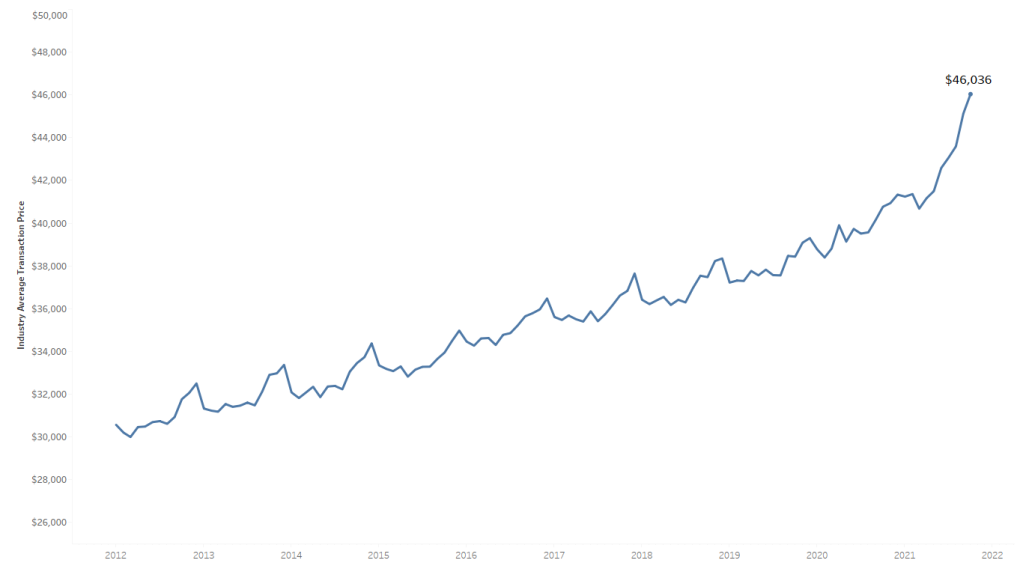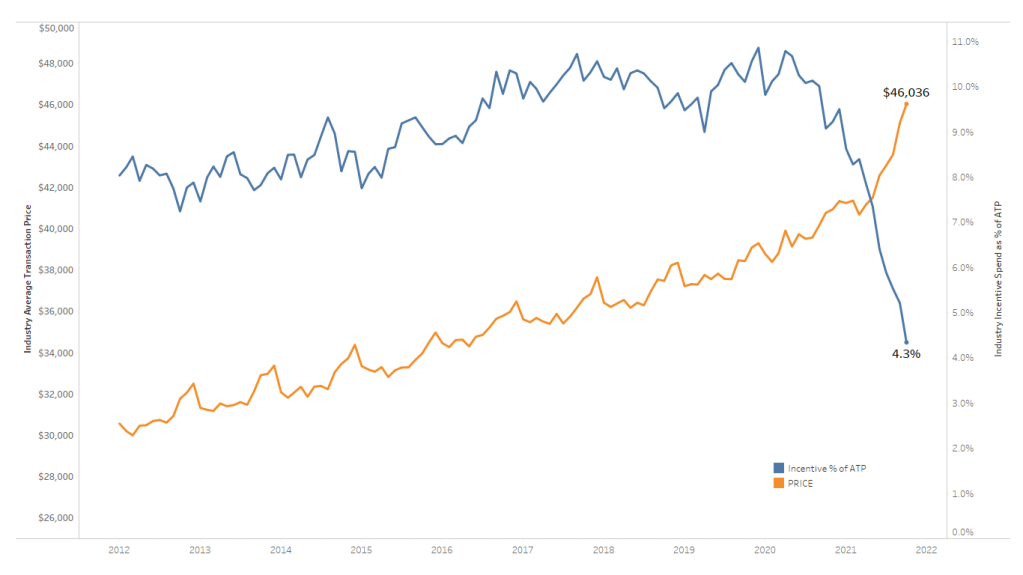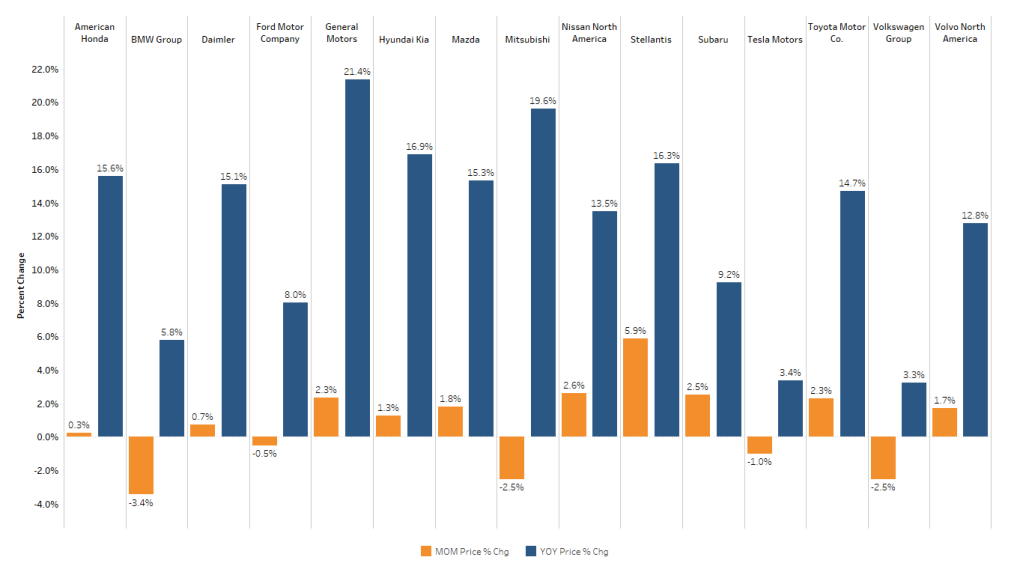Data Point
As Americans Buy More Luxury Vehicles and Pickup Trucks, Average New-Vehicle Transaction Prices Soar, According to Kelley Blue Book
Wednesday November 10, 2021
Article Highlights
- Average transaction prices for new vehicles sold in the U.S. jumped for the seventh straight month in October and hit a record $46,036 with buyers paying an average of $800 over sticker price.
- Incentives drop further in October and average just 4.3% of average transaction price, down from 9.1% in October 2020.
- Higher luxury sales, with a richer mix of large SUVs and pickup trucks drove prices upward. Luxury share was 16.3% last month, up from 15.2% a year ago.
New-vehicle prices jumped up for a seventh straight month and hit another all-time high in October 2021, surpassing $46,000 for the first time, according to a new report from Kelley Blue Book. At $46,036, the average transaction price (ATP) for a new vehicle was up 12.9% (or $5,266) from one year ago in October 2020 and up 2.0% (or $910) from September 2021.
NEW-VEHICLE AVERAGE TRANSACTION PRICE
With tight supply and continued demand, new-vehicle prices remain elevated overall. Price gains in October were especially driven by higher luxury sales and a richer mix of large SUVs and pickup trucks. Luxury share rose to 16.3% of the total market in October, up from 15.2% a year ago. Luxury buyers paid an average of $61,020 for a new vehicle last month.
The average new vehicle is now selling well above the manufacturer’s suggested retail price (MSRP), with the ATP clocking in at 2% above MSRP in October. In other words, buyers were paying an average of $800 over sticker price last month. In October 2019, transaction prices were roughly $2,300 below MSRP.
INDUSTRY AVERAGE TRANSACTION PRICE VERSUS
INDUSTRY AVERAGE INCENTIVE SPEND AS % OF ATP
“Whether they are desperate or impatient, consumers continue to pay hundreds of dollars above the suggested price for new vehicles,” said Kayla Reynolds, analyst for Cox Automotive. “While the average transaction price jumped to a new record high, the average incentive package fell to a 20-year low. To score a new vehicle, buyers are accepting no-haggle pricing, with significant market adjustments in some instances. It is absolutely a seller’s market right now.”
High prices may be impacting sales, but it’s hard to know for certain with new-vehicle supply remaining so tight. Total new-vehicle sales increased slightly in October to 1,056,137, a 4.1% month-over-month increase. Sales, however, were down 22.4% compared to one year ago and down 21.0% compared to October 2019. New-vehicle inventory remains far below healthy levels, and many automakers are steering available microchips to higher-end, higher-margin products. As a result, volumes are depressed, but sales revenue has jumped significantly.
Incentive spending fell in October to a 20-year low, dropping to 4.3% of ATP last month, a decrease from 5.6% in September 2021 and well below the 9.1% of ATP recorded in October 2020. Every brand reduced incentive spending month over month. Porsche had the lowest incentive level in October at 1.5% of ATP. Genesis, Land Rover, Mazda, Subaru and Toyota held their incentives to under 3% of ATP; only Alfa Romeo had incentives above 10% of ATP in October.
PRICE CHANGE PERCENTAGE BY AUTOMAKER
The Kelley Blue Book team is expecting little relief from high new-vehicle prices in the foreseeable future, as new-vehicle inventory is expected to remain tight through the first half of 2022. Automakers will continue to focus on high-revenue products, and the market mix will continue to shift away from more affordable sedans. In October 2021, car share of the U.S. vehicle market dropped to 21.5%, down from 25.7% in October of 2019. Meanwhile, the overall share of pricier SUVs jumped to 52.4% from 49.1%, while pickup truck share increased from 19.3% to 21.3%.



